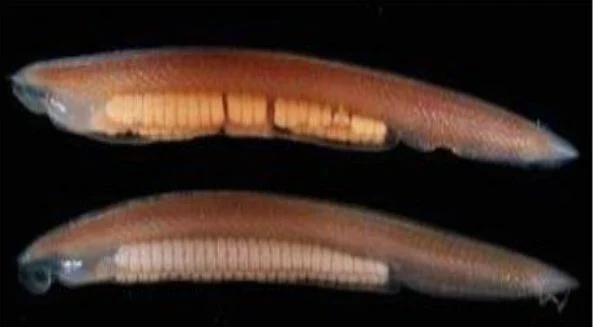In the vast expanse of marine biodiversity, the discovery of Branchiostoma belcheri shines a light on the remarkable diversity of lancelets inhabiting coastal ecosystems. Join us as we embark on a journey to unravel the mysteries surrounding Belcher's lancelet, delving into its taxonomy, ecology, and evolutionary significance.
Taxonomic Classification
Branchiostoma belcheri is classified within the subphylum Cephalochordata, belonging to the phylum Chordata. This lancelet shares fundamental anatomical features with other members of the genus Branchiostoma, including a notochord, dorsal nerve cord, and pharyngeal gill slits. The identification of Branchiostoma belcheri expands our understanding of the diversity and distribution of lancelets within coastal ecosystems.
Morphological Features
Characterized by its slender, lance-shaped body and translucent appearance, Branchiostoma belcheri exhibits typical lancelet morphology. The presence of a notochord provides structural support, while the dorsal nerve cord and pharyngeal gill slits reflect its chordate ancestry. These anatomical traits underscore the evolutionary significance of Branchiostoma belcheri within the broader context of vertebrate evolution.
Ecological Role
Habitat and Distribution
Branchiostoma belcheri inhabits coastal waters across various regions, including the Pacific Ocean and adjacent seas. These lancelets are commonly found in sandy or muddy substrates within shallow marine environments, such as intertidal zones, estuaries, and coastal lagoons. Their distributional range spans diverse coastal habitats, where they play a crucial role in ecosystem dynamics.
Feeding Ecology
As filter feeders, Branchiostoma belcheri contributes to the flow of energy and nutrients within coastal food webs. By filtering microscopic plankton and organic particles from the water column, these lancelets help regulate plankton populations and maintain water quality. Their feeding activities support the productivity and biodiversity of marine ecosystems inhabited by Branchiostoma belcheri.
Evolutionary Significance
Basal Chordates
Branchiostoma belcheri represents a basal chordate lineage that predates the divergence of vertebrates from other chordate groups. Its primitive anatomical features offer insights into the early stages of vertebrate evolution. Comparative studies of Branchiostoma belcheri and other basal chordates illuminate the genetic and developmental processes underlying vertebrate diversity.
Transitional Features
The presence of Branchiostoma belcheri provides an opportunity to study transitional features between invertebrates and vertebrates. Its possession of a notochord, dorsal nerve cord, and pharyngeal gill slits signifies ancestral traits shared by lancelets and vertebrates. By examining these transitional features, scientists gain insights into the evolutionary mechanisms that gave rise to vertebrate complexity.
Conservation Implications
Habitat Protection
Conservation efforts aimed at preserving coastal habitats benefit Branchiostoma belcheri populations and their associated biodiversity. Establishing marine protected areas, implementing habitat restoration projects, and regulating human activities help safeguard the ecological integrity of Branchiostoma belcheri habitats and ensure their long-term sustainability.
Public Awareness
Raising awareness about the ecological importance of Branchiostoma belcheri and the threats facing its habitats is crucial for fostering support for conservation initiatives. Educational outreach programs, community engagement activities, and stakeholder involvement empower local communities to participate in conservation efforts and advocate for the protection of coastal ecosystems.
Research and Monitoring
Further research and monitoring are essential to assess the population status, distribution, and ecological interactions of Branchiostoma belcheri in coastal ecosystems. Long-term monitoring programs, collaborative research initiatives, and interdisciplinary studies can provide valuable data for informed conservation decision-making and management planning.
In conclusion, the discovery of Branchiostoma belcheri enhances our understanding of the biodiversity and evolutionary history of coastal ecosystems. By studying its taxonomy, ecology, and conservation needs, we can contribute to the preservation of this unique lancelet species and the habitats it inhabits.
